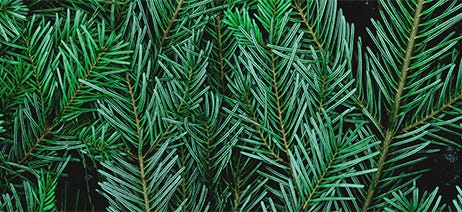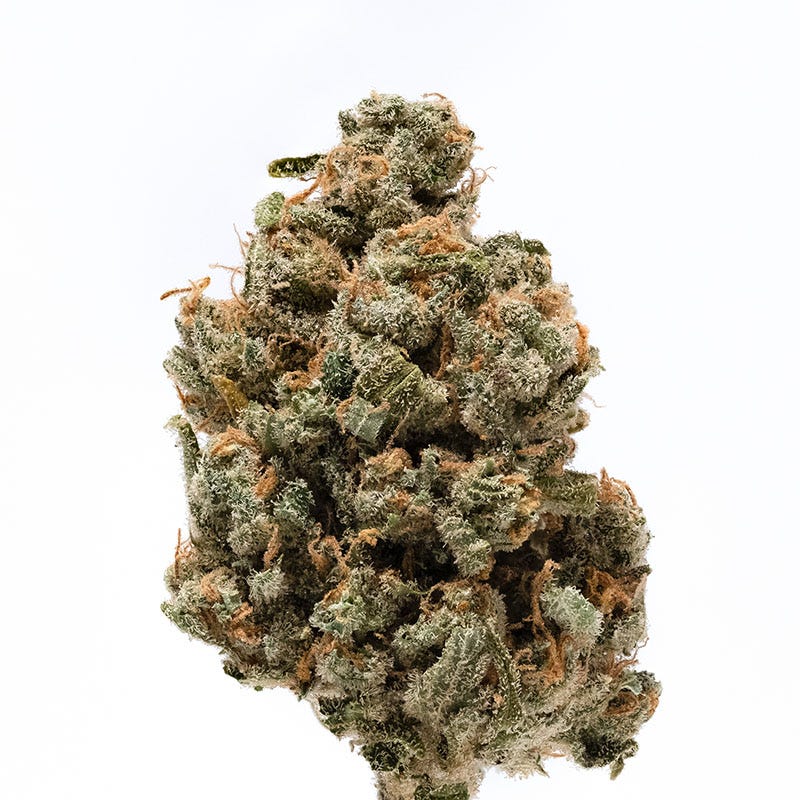
Pinene: The Pine Tree Terpene
When it comes to terpenes, there always has to be one that stands out from the rest. For us, that terpene is pinene. It’s abundant in nature, well researched, and found in more consumer goods than we can even count.1 It’s also a prominent terpene found in cannabis.
In this guide, we’ll share everything we know about pinene, including:
- What is Pinene?
- Where Can You Find Pinene?
- What’s the Difference Between Alpha-Pinene & Beta-Pinene?
- What Strains Are High in Pinene?
- Answering FAQs About Pinene
What is Pinene?
Scientifically speaking, pinene is a bicyclic monoterpene—meaning it has two isoprene units. Those units are called alpha-pinene, or α-pinene, and beta-pinene, or β-pinene.2 When it comes to cannabis and cannabis enthusiasts, pinene can be explained in more layman’s terms—it’s one of the most abundantly found terpenes in nature and in cannabis. Pinene, like all terpenes in cannabis, is believed to contribute to the entourage effect—that is, the sensations you feel when you consume cannabis.
If you’re wondering what pinene smells like, you probably don’t have to think long. Pinene is what gives pine trees their sweet, spicy scent. In cannabis, that familiar forest scent is paired with a woodsy flavor.


Where Can You Find Pinene?
In nature, pinene can be found in a large variety of plants and even fruits. For example, while pinene is in conifers, it’s also in oranges (in the peel), dill, and lavender.1 On the shelves in most stores, pinene can be used in anything from perfume to floor cleaner to essential oils and candles, and it’s typically added to products for that sweet scent we all know and love.
More recently, pinene is also the subject of a lot of research. While pinene has been used in traditional medicine for many years and for a variety of conditions, we’re now trying to understand what effects pinene has in the body.2 While only animal studies have been performed, research is pointing toward pinene possessing some anti-inflammatory properties.2 The effect of these properties in humans is yet to be determined, but we look forward to learning more about this terpene as more studies are published.


What’s the Difference Between Alpha-Pinene & Beta-Pinene?
Without getting too deep into the science, alpha-pinene and beta-pinene are pretty similar. They come from the same sources and share similar characteristics. The most obvious difference between the two is their water solubility—α-pinene is soluble in water and β-pinene is not.3 Additionally, alpha-pinene smells like pine or rosemary,4 and while beta-pinene is still earthy and fresh, it has a bit more spice to its scent like what you’d find in parsley or basil.5
What Strains Are Heavy In Pinene?
It’s pretty easy to walk into a dispensary and find pinene strains. That’s because pinene is in some of the most popular marijuana strains in the country. These are just a couple of the strains high in pinene that we carry:


Blue Dream
Sativa-Dominant Hybrid
There are very few strains that can match the popularity and renown that Blue Dream has earned since it first hit the market. But it’s really no surprise that it’s popular when you look at its parents: Blueberry and Haze, two famous strains in their own right. Blue Dream is just a slightly more sativa-dominant hybrid with an interesting combination of moderately high THC levels, 2% CBD and 1% CBN. But beyond its unique effects, Blue Dream tastes and smells incredible—like blueberry pie.6
Dutch Treat
Indica-Dominant Hybrid
We have Amsterdam to thank for this indica-dominant strain, with its moderate-to-high THC levels that range between 18-25%. Dutch Treat smells like eucalyptus, a pinene-rich shrub, but it also has that sweet, forest flavor that comes from the terpene. Dutch Treat, like Blue Dream, is also a child of Haze, though its other parent plant is Northern Lights.7
Jack Herer
Sativa-Dominant Hybrid
It would be pretty hard to name the top 5 most popular sativa-dominant hybrids and not mention Jack Herer. This legendary strain honors the cannabis activist for who it’s named. Jack Herer has an earthy flavor, and many cannabis enthusiasts liken its scent to Pine-Sol, a lemon-pine combination popular in households across the country. Like Dutch Treat, it comes from a pairing of Haze and Northern Lights, with a splash of Shiva Skunk too, and also like Dutch Treat, it has moderate-to-high levels of THC.8


Answering FAQs About Pinene
Because it’s such a common terpene, we get a lot of questions about pinene. Here’s just a few answers to help sate your curiosity:
Is pinene indica or sativa?
Neither. Pinene is a terpene, which means it’s a compound that can be found in both indica and sativa strains (along with their hybrid variations).
How does pinene make you feel?
As an aroma or in an essential oil, some people say that pinene gives them a sense of calmness and relaxation.9 They equate the scent to a peaceful walk in the woods.
In cannabis, the pinene terpene is one of many compounds you consume when you consume marijuana. While we are certain that pinene contributes to the entourage effect, it’s impossible to identify what feelings or sensations might be specifically due to pinene.
Is pinene only in cannabis?
Nope! Pinene is all around you, in coniferous trees, dill, basil, and rosemary. But that’s not all. Pinene is harvested for its scent and added to a variety of consumer products, including candles and even insecticides. It’s also in food, like pine nuts and limes.10 So it’s possible that if you love key lime pie, you’ve indulged in pinene.


Purchasing Cannabis Rich in Pinene
If you’re ready to pick up some pinene-rich cannabis, make a visit to your local dispensary. While you’ll likely find a couple of the strains on our list, there are many more our budtenders can introduce to you. You can pick up an old favorite or try something new.
Sources:
1. “Guide to pinene, the pine-scented terpene,” Leafwell, May 21, 2025, https://leafwell.com/blog/pinene
2. “A Review of the Potential Use of Pinene and Linalool as Terpene-Based Medicines for Brain Health: Discovering Novel Therapeutics in the Flavours and Fragrances of Cannabis,” Frontiers in Psychiatry, August 26, 2021, https://pmc.ncbi.nlm.nih.gov/articles/PMC8426550/
3. “Therapeutic Potential of α- and β-Pinene: A Miracle Gift of Nature,” Biomolecules, November 14, 2019, https://pmc.ncbi.nlm.nih.gov/articles/PMC6920849/
4. “What is pinene and what does this cannabis terpene do?,” Leafly, April 2, 2015, https://www.leafly.com/news/cannabis-101/what-is-pinene-and-what-are-the-benefits-of-this-cannabis-terpene
5. “BPI: Beta Pinene,” Lab Effects, https://labeffects.com/terpene-glossary/beta-pinene
6. “Blue Dream,” Leafly, https://www.leafly.com/strains/blue-dream
7. “Blue Dream Marijuana Strain,” Allbud, https://www.allbud.com/marijuana-strains/sativa-dominant-hybrid/blue-dream
8. “Dutch Treat Marijuana Strain,” Allbud, https://www.allbud.com/marijuana-strains/indica-dominant-hybrid/dutch-treat
9. “Jack Herer Marijuana Strain,” Allbud, https://www.allbud.com/marijuana-strains/sativa/jack-herer
10. “Pinene,” Weedmaps, https://weedmaps.com/learn/the-plant/pinene


